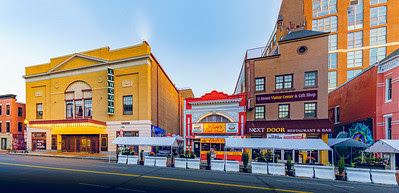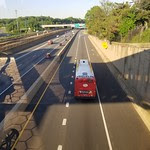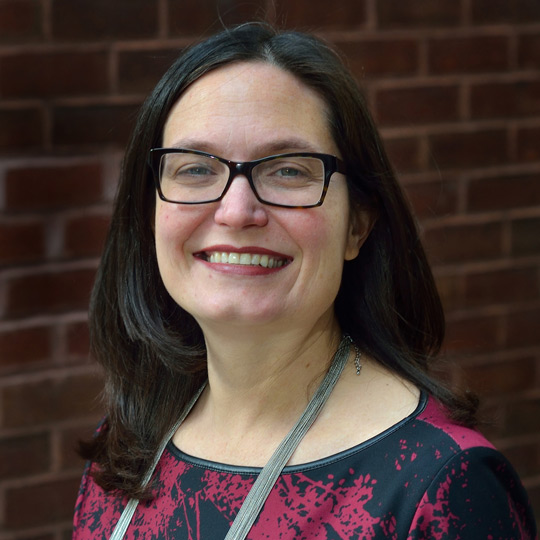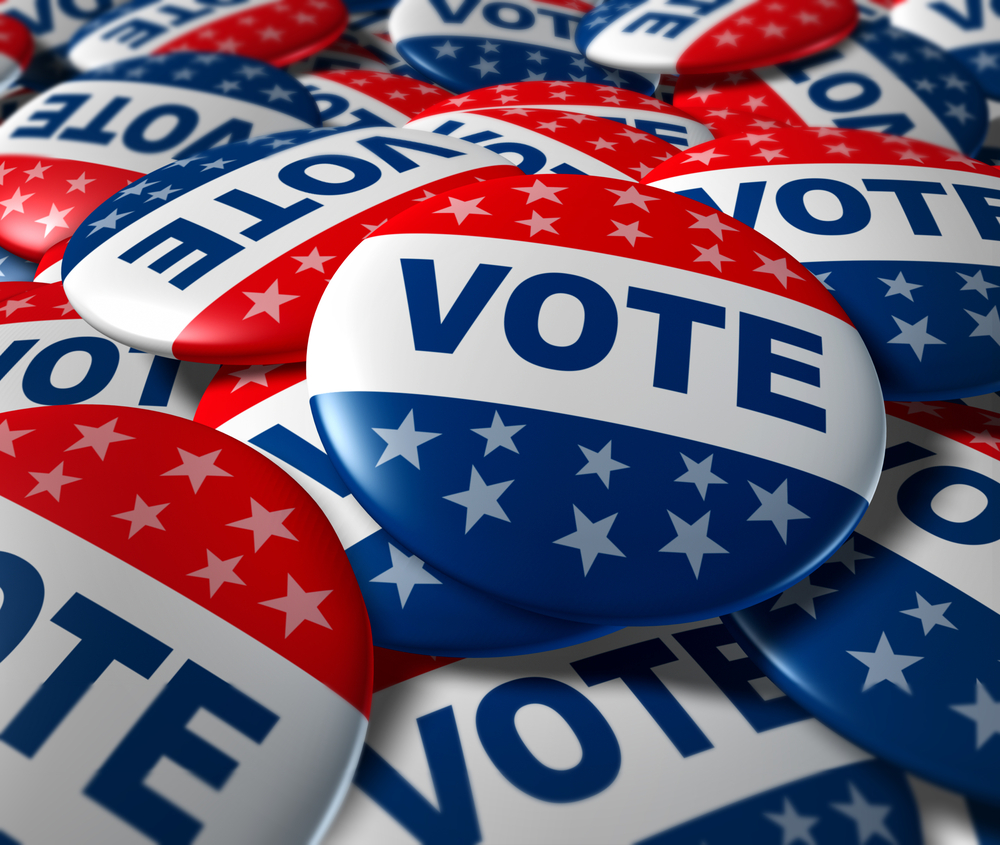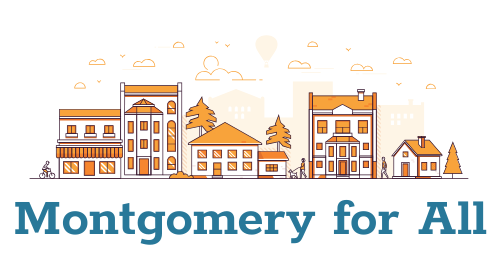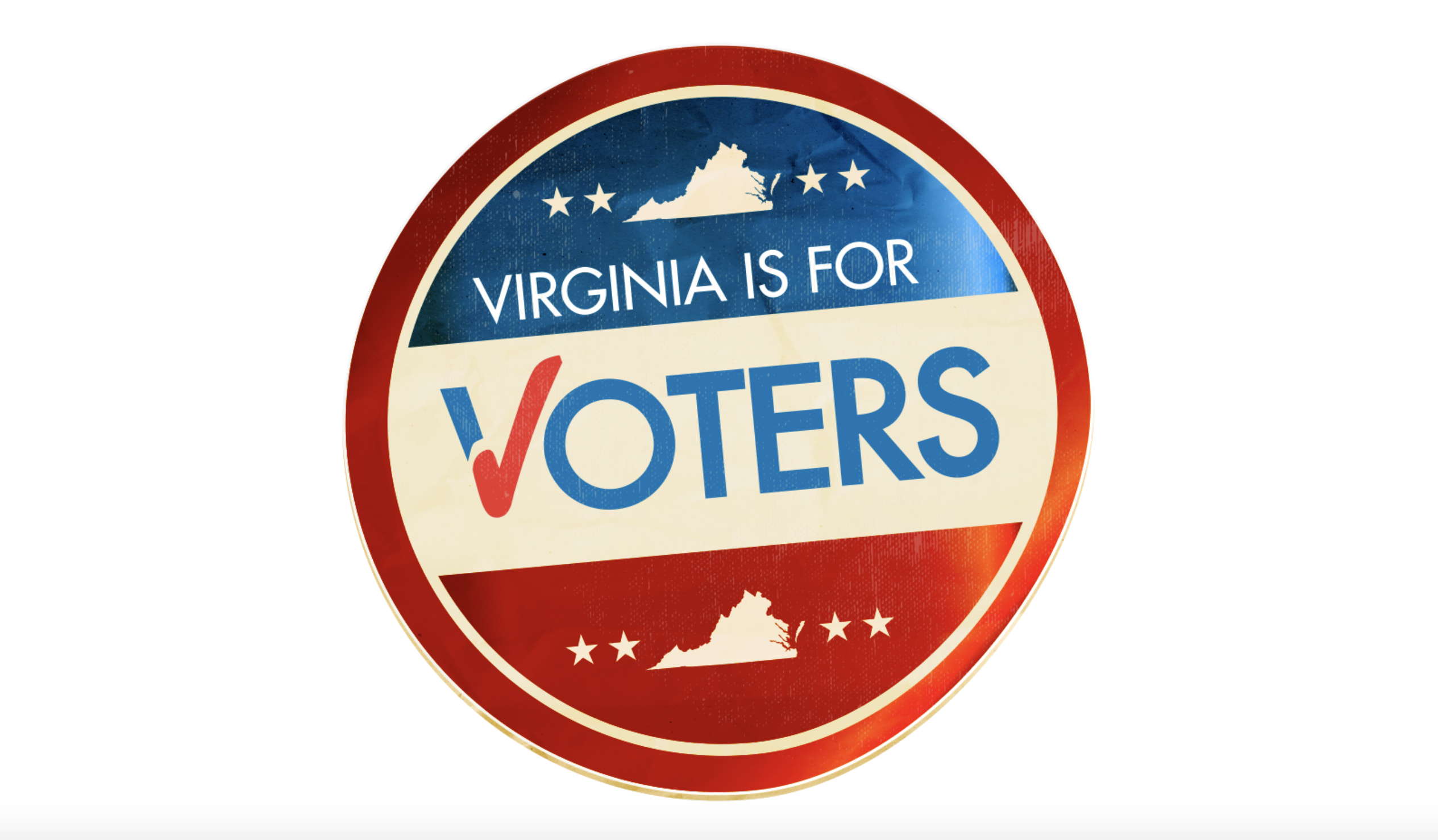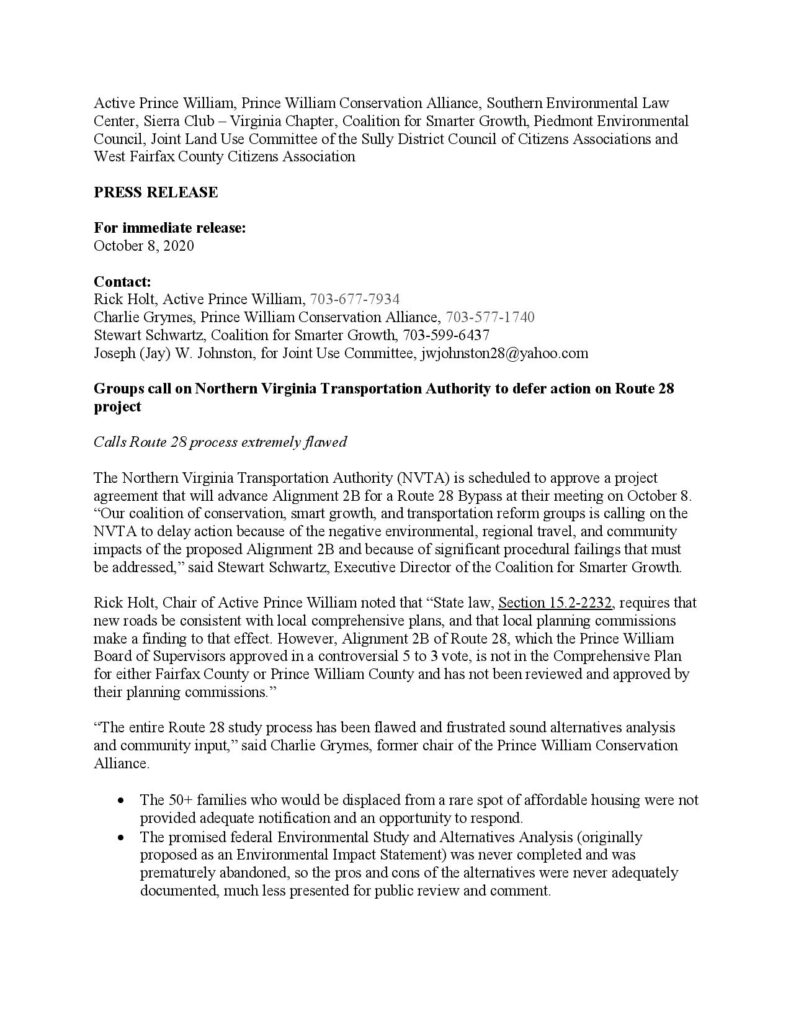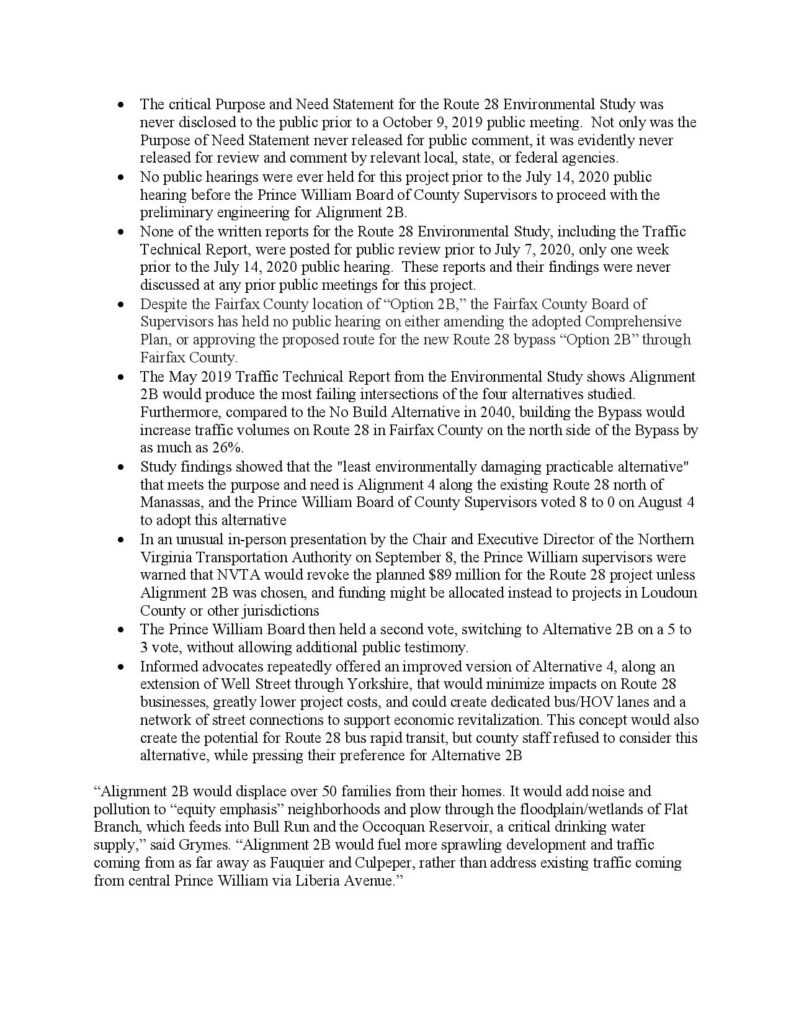PRESS RELEASE
For Immediate Release:
October 14, 2020
Contact:
Stewart Schwartz, 703-599-6437
CSG hails new national climate, land use, and transportation report and issues a Call to Action to regional elected officials
Today, Smart Growth America (SGA) released Driving Down Emissions demonstrating that where and how we grow (i.e. land use and community design) is the critical piece for reducing emissions from transportation. CSG welcomed the report and issued a call to action to regional elected officials to act on their promises and move faster to implement more sustainable land use and transportation in order to fight climate change.
“We welcome this definitive report from SGA,” said Stewart Schwartz, Executive Director of the Coalition for Smarter Growth. We’ve campaigned in the DC region for over two decades for a strong core city and regional network of walkable, transit-oriented communities – a regional vision validated by the findings of the SGA report. Our vision has been embraced by the Council of Governments (COG) and most local officials, and we’ve seen a strong shift to these transportation-efficient communities — but much more work needs to be done AND faster if we are going to do our part to slash emissions.”
“The SGA report highlights that transportation is now the number one source of U.S. greenhouse gas emissions. Its share is even higher in the DC region where 34% of our greenhouse gas emissions are generated by on-road vehicles, and as illustrated by the SGA report it’s the location and design of development that is playing the central role in the amount of driving and emissions,” said Bill Pugh, Senior Policy Fellow for CSG.
“The DC region is at a literal crossroads. Right now, major land use and transportation decisions before our elected officials will determine whether this region fuels more sprawl, driving, pollution and greenhouse gas emissions, and worsens racial and social equity, OR chooses the course committed to at COG — to invest in transit-oriented development, transit and more affordable housing close to jobs and transit, to address racial and economic inequity, and reduce emissions,” said Jane Lyons, Maryland Advocacy Manager for CSG.
“Massive highway expansion such as the high-occupancy toll lanes in Virginia and Maryland, the recently approved Route 28 bypass in Prince William, and numerous arterial road widenings will mean more driving and emissions, and more spread-out development,” said Sonya Breehey, Virginia Advocacy Manager for CSG. “This must end.”
“Failure to incentivize and prioritize development at Metro stations and in aging commercial corridors will mean failure to reduce driving and emissions,” said Cheryl Cort, Policy Director for CSG. “Meanwhile approving more sprawling development in Prince William’s Rural Crescent or in rural areas in outer suburbs located 30 miles or more from the core of the DC region will mean even more driving and emissions,” said Breehey.
Driving Down Emissions summarizes decades of studies showing that highway expansion actually creates more traffic: “New highways, roads, and lanes induce more driving (VMT), which leads to more emissions and ultimately more congestion, a feedback loop referred to as “induced demand.” A recent study suggests driving increases in exact proportion with increases in lane-mileage—a 10 percent increase in lane miles can lead to a 10 percent increase in driving.”
“SGA offers five recommendations for how we can grow equitably and efficiently to reduce vehicle miles traveled and greenhouse gas emissions. This region offers examples, which we highlight below, for how we are trying to do this but also examples where we are falling short,” said Pugh.
SGA’s FIVE RECOMMENDATIONS AND A SNAPSHOT ON ACTIONS IN THE DC REGION
1) Meet the demand for homes in walkable, compact neighborhoods
- Last fall, thanks to years of CSG advocacy, our region adopted a set of regional housing targets to ensure that enough housing is produced by 2030 and that 75% of new units are located in Regional Activity Centers or near high-capacity transit. (MWCOG board resolution, September 11, 2019)
- While this is a good start, not all Regional Activity Centers are walkable or compact. Households in the Gainesville activity center in Prince William County, VA drive between 23,000 and 25,000 miles per year on average, while those in the mixed-use Mosaic District of Fairfax County, walking distance from the Metro, drive on average 15,000 to 16,000 miles per year. Households across the entire District of Columbia drive 12,000 miles per year on average, and the share of DC residents who walk, bike and take transit to work is well over 50% of all work trips.
- The COG 2019 State of the Commute Report shows that 75% of workers in outer suburban locations drive alone to work compared with only 37% in the region’s core jurisdictions (DC, Alexandria, Arlington). 58% of commuters in the core commuted by transit, walking or biking. (MWCOG).
2) Build safer, walkable streets
- CSG and partners have campaigned for Vision Zero, including street design changes necessary to end deaths and serious injuries for all users.
- Many local jurisdictions have adopted Vision Zero and Complete Streets policies, added protected bike lanes, and traffic calming, but much more needs to be done as pedestrian deaths in particular continue to increase.
- Among the many local places we are working, we are currently campaigning in Fairfax for redesign of Richmond Highway (Route 1) and reducing the speed from 45 mph to 35 mph. In this year alone, four people have been killed walking along or trying to cross Richmond Highway.
- Unfortunately, jurisdictions in the DC region are lagging counterpart regions in Europe and the U.S. in implementing protected bicycle lanes, dedicated bus lanes, and shared streets for people — a need spotlighted during the pandemic.
3) Set targets for VMT and GHG emissions reductions
- The regional Council of Governments is currently updating its Climate and Energy Action Plan and looking for ways to reduce greenhouse gas emissions 50% below 2005 levels by 2030. We probably need to do even more, and this is a crucial opportunity to set clear targets for reducing both total and per capita vehicle miles traveled to meet our 2030 greenhouse gas emissions reduction goal.
- As detailed in the SGA report, numerous studies have shown that more fuel efficient or fully electric vehicles are not sufficient to meet our transportation climate goals, and we must also reduce the need to drive. The region’s next climate plan and next update of its long-range transportation plan must clearly show how we do this.
4) Provide transportation options and make transit a priority
- CSG campaigned successfully for the first-ever dedicated funding for Metro with business allies in the MetroNow coalition and is campaigning for Better Buses — focusing on frequent, reliable, and affordable service. CSG won additional funding in Virginia for transit when the state transportation funding structure was amended earlier this year.
- The Transportation Planning Board, the states of Maryland and Virginia, the Northern Virginia Transportation Authority and many local governments, are still far too focused on expanding road capacity.
5) Prioritize connecting people to destinations
- We’ve learned that accessibility to daily needs is more important than long-distance “mobility.” DC, Arlington, Alexandria, Bethesda, Silver Spring, Falls Church, Tysons and the Mosaic District all show that proximity matters. Creating walkable, bike-friendly, mixed-use communities with frequent transit means that people can drive less and meet their daily needs.
- The 2016 GreenPlace study by CSG A study of five transit-oriented projects in DC showed daily household VMT and CO2 output per household to be far lower than regional averages. The analysis found that the TOD projects averaged 17 to 25.5 daily VMT per household and 16-25 lbs of daily carbon output per household, compared to regional averages of 45 daily VMT and 69.4 lbs daily carbon output.
- The 2010 CSG Cooler Communities study found that a development site with high walkability, mix of uses, and frequent transit service will have reduced CO2 emissions compared with a less accessible site, including in our suburbs. In addition, location, not just design, of development makes a huge difference. Hypothetical relocation of TOD projects to non-TOD suburban locations in the DC region increased CO2 emissions. Conversely, hypothetically relocating a non-TOD suburban development to a suburban TOD location reduced CO2 emissions. For example, the New Carrollton Transit District Plan reduced CO2 emissions by 11.2% when compared against relocating the plan build-out to auto-dependent Konterra.
A note about the pandemic and telecommuting:
The rise in telecommuting is expected to endure and will represent an estimated 10-15% reduction in work trips after the pandemic. This adds to further support for an end to highway expansion. However, most daily trips will continue to be non-work trips, but this reinforces the need to make all communities more walkable with nearby access to goods, services, and recreation.
CSG’s Call to Action in the DC Region:
“Unfortunately, we have much more to do in the DC region if we are going to drive down emissions to the levels necessary to stem climate change,” said Schwartz. Among the actions we need from our elected officials are:
1) Every local government needs to accelerate and incentivize transit-oriented development, supported by their state governments. The “Connect Greater Washington” study shows that TOD buildout will maximize the efficiency and farebox recovery for Metro, while reducing vehicle miles traveled and land lost to parking.
2) Every level of government should treat funding for affordable housing as a top infrastructure priority. $100 million for affordable housing near jobs and transit is worth far more than $100 million spent on another ineffective interchange. Housing that is affordable and in the right locations reduces driving and increases walking, biking and transit use, provides family security and health benefits, and results in better educational outcomes for children, while also driving down emissions.
3) Suburban and rural jurisdictions need to stem sprawl, protect farms, forests and rural landscapes that secure our drinking water, while focusing growth in existing towns, and ensuring new communities are compact, built on a grid of local streets, and connected to transit.
4) The next Council of Governments regional Constrained Long-Range Transportation Plan needs to cancel hundreds of lane miles of highway and arterial expansion and shift the funding to transit, local street networks, and bicycle pedestrian investment that support transit-oriented communities. The same is true for the next Northern Virginia Transportation Authority regional plan and state and local jurisdiction plans.
5) Every level of government needs to stop using vehicle level of service and “congestion reduction” as metrics for deciding what transportation investments to make. These measures ignore the real problem of induced demand and make our communities unwalkable and unlivable, leading to more driving and emissions.
“The SGA report confirms what officials in the DC region know and what the vast majority have committed to at COG and at the local level. We need every local elected official to follow-through on these commitments if we are going to grow sustainably, equitably and competitively, and beat climate change in the process,” concluded Schwartz.
###

